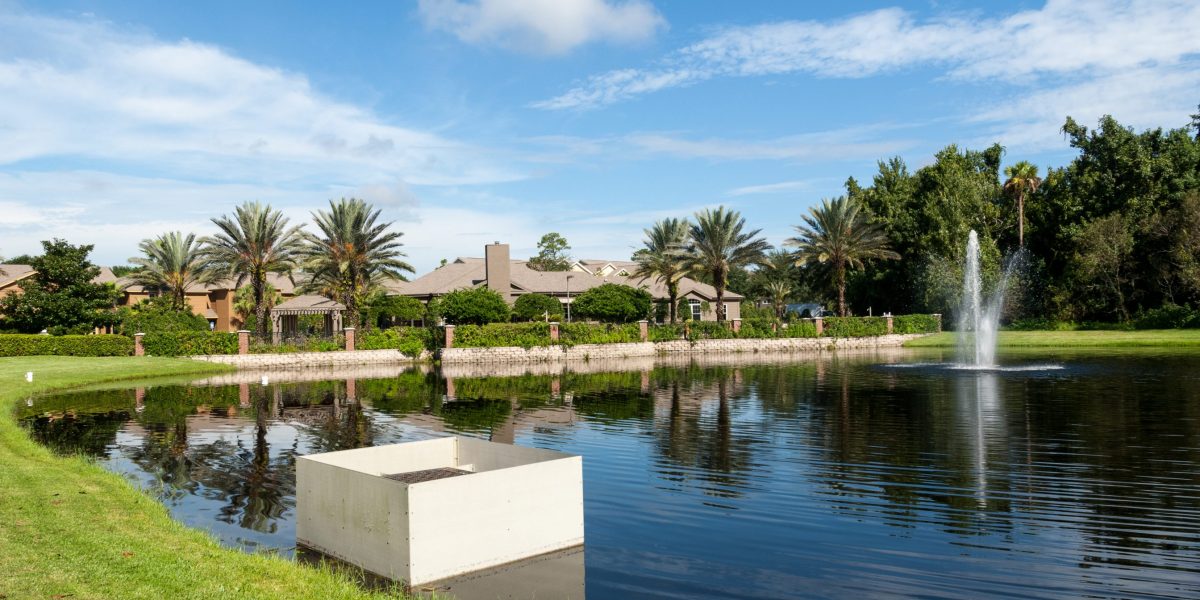Your stormwater system stores and treats runoff water from roads and sidewalks

Whether you are a long-time resident or you’re new to Florida, you may have noticed the many stormwater ponds that dot the landscape. While the state boasts thousands of waterways, stormwater ponds are man-made water bodies that some have mistaken for natural waterways.
Stormwater ponds are more than aesthetically pleasing additions to our neighborhoods — many are beautiful with aerating fountains, aquascaping and the wildlife they attract. They serve a valuable function year-round and are designed to mimic natural processes, allowing sediments, chemicals, debris and other pollutants to settle to the bottom of the pond rather than flowing to natural waterways and to store rainwater and minimize flooding concerns. Without such a system, this untreated stormwater runoff usually flows into the nearest body of water. The result is excess nutrients in the waterways which, under the right conditions, help feed algal blooms.
During Florida’s rainy and hurricane seasons, it’s especially important that stormwater ponds in our neighborhoods function properly to store large quantities of rainwater and treat the stormwater runoff. Neighborhood stormwater systems are permitted by the Florida’s water management districts and the Florida Department of Environmental Protection, and after construction of permitted systems in residential areas, legal responsibility for maintaining these systems typically is passed to a homeowners’ association (HOA) or property management company. A copy of your association’s operation and maintenance permit, plans and maintenance guidelines were transferred to your homeowners’ association and information about your system may be obtained by contacting the District.
Local governments may be the primary entities responsible for maintaining stormwater systems, implementing a community’s master stormwater plan and implementing retrofit projects for areas built prior to the state’s stormwater rules. The stormwater system operation and maintenance may be under the control of the HOA and their contracted management company. In advance of hurricane season, the HOA or management company should check all control structures in ponds and remove any debris that might impede water flow through the structure. Homeowners should be advised to make sure their lawns and landscapes do not contribute excess nutrients and debris to the neighborhood’s stormwater system or nearby waterways. Homeowners can do this by keeping grass clippings and leaves out of the street so they don’t wash into storm drains, following manufacturer directions when using chemicals and fertilizer, and fertilizing sparingly only where and when necessary.
The St. Johns River Water Management District has staff to assist communities with stormwater system questions and resources available on its website, including:
- Homeowners’ association resources: sjrwmd.com/hoa-resources
- Overview of stormwater systems: sjrwmd.com/education/stormwater-systems
- Stormwater systems quick guide: sjrwmd.comhttps://aws.sjrwmd.com/SJRWMD/education/Stormwater-systems-info-sheet.pdf
- Division of Regulatory staff contacts: sjrwmd.com/contact/#permitting-contact
Even if our homes are not adjacent to a stormwater pond or a natural waterway, we impact these bodies of water through our everyday activities. By working together, each of our individual contributions can have positive benefits in our own neighborhoods and our communities at large.


